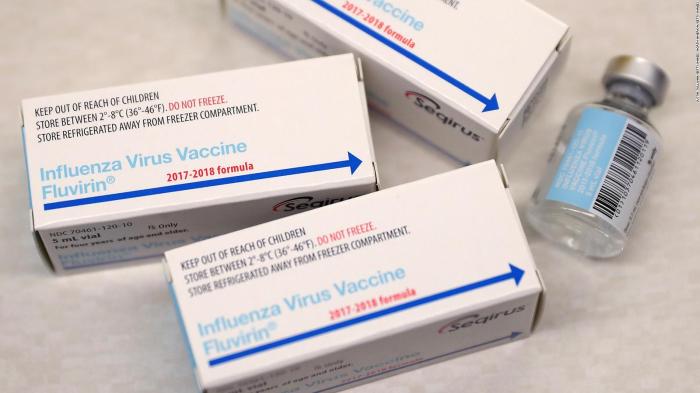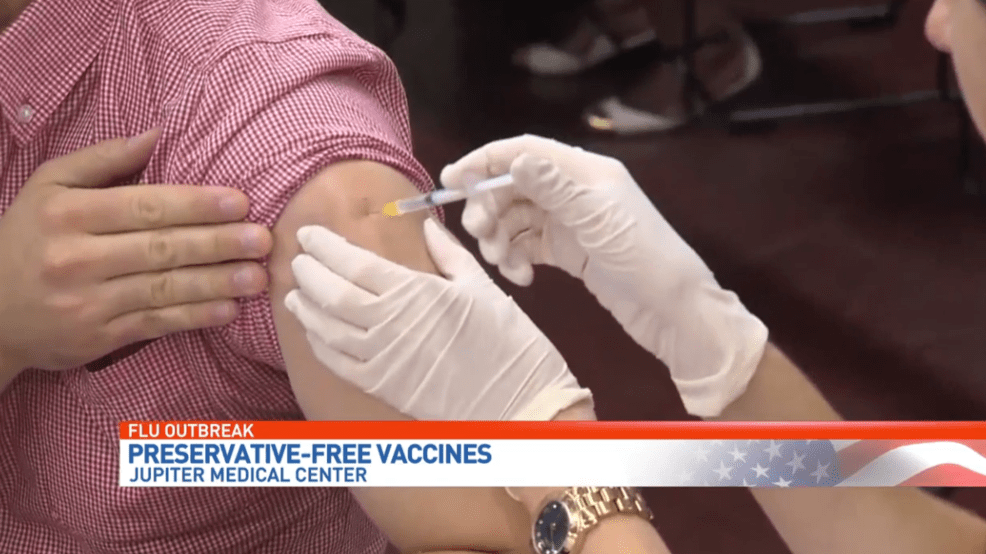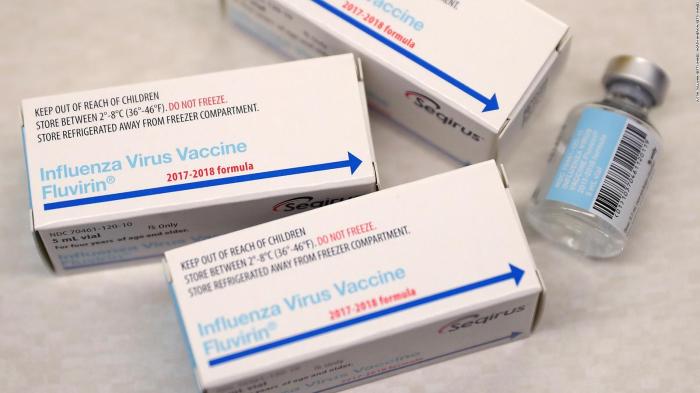How long does a flu shot last? This crucial question affects everyone’s decision to get vaccinated. Understanding the duration of protection offered by flu shots is key to making informed choices about your health. Different factors, like the specific flu strain, your immune system, and even underlying health conditions, all play a role in how long your protection lasts.
This comprehensive guide delves into the science behind flu shot effectiveness, providing you with clear answers and insights.
The duration of flu shot protection isn’t a one-size-fits-all answer. Factors like the type of vaccine, the individual’s immune response, and the specific circulating influenza strains all contribute to the length of time you’re shielded from the virus. This exploration will provide a clear understanding of the complexities involved.
Effectiveness Duration

Flu shots are a crucial part of seasonal influenza prevention. Understanding how long the protection lasts is vital for making informed decisions about vaccination schedules and potential booster shots. While the protection isn’t lifelong, the duration plays a significant role in community health.Influenza vaccines, generally, don’t provide lifelong immunity. The protection they offer is strain-specific and varies based on several factors, including the specific influenza virus circulating, the recipient’s immune response, and their overall health.
Duration of Protection by Vaccine Type
Different types of influenza vaccines have varying durations of effectiveness. The duration depends on the specific formulation, and the individual’s immune response.
- Inactivated Influenza Vaccines (IIVs): These vaccines use inactivated influenza viruses, meaning they are not live. IIVs typically provide protection for about 6 to 8 months. The protection can be shorter in individuals with weakened immune systems. The effectiveness of the IIV can vary based on the specific strain circulating in the community and the individual’s immune response.
- Live Attenuated Influenza Vaccines (LAIVs): These vaccines use weakened, live influenza viruses. They are generally effective for about 4 to 6 months. LAIVs are generally well-tolerated by healthy individuals. The length of protection offered by LAIVs is often shorter than that of IIVs, especially in those with compromised immune systems.
- mRNA Influenza Vaccines: These vaccines use messenger RNA (mRNA) to teach the body’s cells how to make proteins that trigger an immune response against influenza. The duration of protection offered by mRNA vaccines is still under active study and monitoring. Early data suggests that protection may last for a similar timeframe to IIVs, and possible annual booster doses may be needed.
Factors Influencing Protection Duration
Several factors can influence how long a flu shot’s protection lasts. This understanding is key to developing effective vaccination strategies.
- Circulating Influenza Strains: The specific strains of influenza circulating during a given season are a significant factor. If the circulating strains are significantly different from those included in the vaccine, protection might be reduced.
- Immune Response: Individual immune responses vary greatly. Factors like age, overall health, and pre-existing conditions can impact how effectively the body mounts an immune response to the vaccine. Stronger immune responses often correlate with longer protection periods.
- Overall Health: Chronic health conditions and weakened immune systems can reduce the duration of protection offered by a flu shot. For instance, individuals with compromised immune systems might require more frequent vaccinations to maintain protection.
Comparison Table
| Vaccine Type | Estimated Duration of Protection | Contributing Factors |
|---|---|---|
| Inactivated Influenza Vaccine (IIV) | 6-8 months | Circulating strains, individual immune response, overall health |
| Live Attenuated Influenza Vaccine (LAIV) | 4-6 months | Circulating strains, individual immune response, overall health |
| mRNA Influenza Vaccine | Estimated 6-8 months (ongoing studies) | Circulating strains, individual immune response, overall health |
Immune Response and Protection
Understanding how your body responds to the flu vaccine is key to appreciating its effectiveness. The vaccine doesn’t give you the flu; instead, it triggers a protective immune response that prepares your system to fight off the actual virus if you encounter it later. This process is complex but fascinating, involving a cascade of cellular and antibody-mediated actions.The flu shot introduces weakened or inactivated flu viruses into your system.
This serves as a “practice run” for your immune system, allowing it to recognize the viral components and develop strategies to neutralize them. This training is crucial for mounting a rapid and robust defense against the actual virus should you become exposed.
The Body’s Immune Response to the Flu Vaccine
Your immune system, a sophisticated network of cells and proteins, is remarkably adept at identifying and eliminating foreign invaders. Upon encountering the flu vaccine, specialized cells, such as dendritic cells, capture the viral components and present them to other immune cells. This crucial presentation triggers a series of events leading to the development of immunity.
So, how long does a flu shot actually protect you? Generally, it lasts for about 6 months, but it can vary. Knowing how your body reacts to vaccinations is interesting, especially when considering the complex muscle groups that play a role, like the quadriceps muscles. What are the quadriceps muscles are crucial for everyday movements, and understanding their function helps appreciate the body’s intricate workings.
Ultimately, the effectiveness of a flu shot depends on individual factors and the specific strain of the flu, so remember to get your yearly dose to stay protected!
Antibody Production
A key player in this response is the production of antibodies. Antibodies are specialized proteins that bind to specific parts of the virus, essentially tagging it for destruction. The body produces antibodies tailored to the specific strains of influenza included in the vaccine. This specific targeting is vital for effective protection. These antibodies circulate in the bloodstream, ready to neutralize any influenza viruses that try to infect you.
Cellular Immunity
In addition to antibodies, the immune response involves cellular immunity. Certain immune cells, like T cells, recognize and destroy infected cells, preventing the virus from spreading throughout the body. This cellular component of the immune response provides an additional layer of protection, acting as a secondary defense mechanism.
Flu shots generally offer protection for about 6 months, but their effectiveness can vary. While we’re on the topic of health, it’s important to consider that the curability of conditions like kidney cancer is complex and depends on many factors. For more information on is kidney cancer curable , it’s crucial to consult with a medical professional.
Ultimately, getting a flu shot is a proactive step in protecting your health, and it’s something to consider for the upcoming season.
Individual Variations in Immune Response
Individual responses to the flu vaccine can differ. Factors such as age, overall health, and pre-existing conditions can influence the strength and duration of the immune response. For example, younger children or individuals with weakened immune systems might need a booster dose to maintain adequate protection. Similarly, individuals with chronic health conditions may experience a slightly different immune response compared to healthy individuals.
Impact of Pre-existing Conditions
Pre-existing health conditions can influence the duration of protection offered by the flu vaccine. Individuals with compromised immune systems, such as those with HIV/AIDS or undergoing chemotherapy, may experience a shorter duration of protection. Furthermore, individuals with conditions like asthma or diabetes may also exhibit varying levels of protection, requiring careful consideration and potentially additional booster doses to maintain immunity.
So, how long does a flu shot actually last? It’s not a permanent shield, you know. While the protection offered can vary, it’s generally around 6 months to a year. However, it’s important to consider that too much fiber in a cholesterol-lowering diet, for example, could potentially impact the overall effectiveness of your immune system, which might also affect how long your flu shot protection lasts.
Too much fiber in cholesterol lowering diet can be a tricky balance to get right. Ultimately, getting a flu shot each year is a smart way to stay protected.
Diagram: Immune Response to a Flu Shot
Imagine a circle representing your body. Small, colored shapes inside represent the various types of immune cells (B cells, T cells, dendritic cells). The vaccine, represented by a different colored shape, enters the body. Dendritic cells capture the vaccine components. These cells then travel to lymph nodes (depicted as small, interconnected ovals) where they present the vaccine’s pieces to other immune cells, specifically B cells and T cells.
B cells produce antibodies, which are depicted as small, stick-like structures attaching to the vaccine components. T cells directly attack infected cells, represented by small, red-highlighted cells. The entire process illustrates the activation of your immune system, creating a memory of the vaccine and preparing for a future encounter with the actual virus.
Influenza Strain Evolution
The influenza virus is notorious for its ability to mutate, a process that significantly impacts the effectiveness of flu shots. Understanding these mutations is crucial for predicting and preparing for future outbreaks. This dynamic nature of the virus requires constant vigilance and adaptation in vaccine development.The influenza virus’s RNA structure makes it highly prone to genetic changes. These changes, often occurring through a process called antigenic drift, result in slightly altered viral proteins, particularly the hemagglutinin (HA) and neuraminidase (NA) proteins.
These proteins are crucial for the virus’s ability to bind to and infect human cells. These slight changes are often enough to evade the immune response triggered by previous vaccinations.
Impact on Vaccine Effectiveness
Influenza strains constantly evolve, leading to changes in the virus’s surface proteins. These alterations can impact the duration of protection offered by a flu shot. If the circulating strain differs significantly from the strains included in the vaccine, the vaccine’s effectiveness will be diminished. This underscores the need for yearly updates to the flu vaccine composition.
Predicting and Developing New Vaccines
Scientists employ sophisticated surveillance methods to track the evolution of influenza viruses. Global monitoring networks analyze samples from various locations to identify the predominant circulating strains. This information is crucial in predicting which strains will be prevalent in the upcoming flu season. Based on this data, scientists formulate new vaccine compositions containing the predicted strains. This process involves extensive research and laboratory testing to ensure the vaccine’s safety and efficacy.
Tracking and Adapting Vaccine Composition
Scientists meticulously track the genetic makeup of influenza viruses. This involves analyzing the HA and NA genes to identify mutations that might affect the virus’s ability to infect cells. This analysis informs the selection of strains included in the next season’s vaccine. For instance, if a particular strain exhibits significant antigenic drift, it is likely to be included in the next vaccine formulation.
The adaptation of the vaccine composition is an ongoing process, constantly adjusting to the evolving influenza strains.
Flu Season Effectiveness Comparison
| Flu Season | Predominant Influenza Strains | Vaccine Effectiveness (estimated) |
|---|---|---|
| 2022-2023 | Influenza A (H3N2) and Influenza B | Moderate effectiveness |
| 2021-2022 | Influenza A (H3N2) and Influenza B | High effectiveness |
| 2020-2021 | Influenza A (H1N1) and Influenza B (predominant in some regions) | Varied, impacted by pandemic conditions |
Note: Vaccine effectiveness varies based on factors such as individual immune response and the specific strains circulating during a given season. The table above presents a simplified overview and should not be taken as absolute measurements.
Factors Affecting Duration
The effectiveness of a flu shot isn’t a one-size-fits-all scenario. Various factors influence how long the protection offered by the vaccine lasts. Understanding these factors can help individuals make informed decisions about their flu prevention strategies. These factors, from age to individual immune response, are key considerations when evaluating the optimal timing and frequency of flu vaccinations.
Age Impact on Duration
Age significantly impacts the body’s response to the flu vaccine. Infants and young children often have a less robust immune response compared to adults, potentially leading to a shorter duration of protection. Similarly, the elderly may experience a weaker immune response, also resulting in a potentially shorter duration of protection. This age-related variation underscores the importance of vaccination for all age groups, especially those with compromised immune systems.
Underlying Health Conditions and Protection
Individuals with underlying health conditions, such as chronic respiratory illnesses, weakened immune systems, or diabetes, might experience varying degrees of protection from the flu shot. These conditions can affect the body’s ability to mount a robust immune response, potentially leading to a shorter duration of protection compared to those without such conditions. It’s essential to consult with a healthcare provider to determine the best course of action for individuals with underlying health conditions.
Individual Immune Responses and Protection
Individual immune responses play a crucial role in determining the effectiveness and duration of protection from a flu shot. Some individuals may have stronger immune responses than others, resulting in longer-lasting protection. Factors like genetics, overall health, and nutrition can all contribute to the strength of an individual’s immune response. This variability in immune response highlights the importance of personalizing vaccination strategies when possible.
Administration Method and Duration
The method of flu shot administration can potentially influence the duration of protection. While injectable flu vaccines are the most common, nasal spray vaccines are also available. The duration of protection offered by each method may differ. The different administration methods have different effects on the body’s immune response. Further research is needed to fully understand the long-term implications of each method.
Factors Influencing Flu Shot Protection Duration – Flowchart
 Note: This is a simplified flowchart. The interactions between these factors are complex and not fully understood.
Note: This is a simplified flowchart. The interactions between these factors are complex and not fully understood.
Boosters and Additional Doses: How Long Does A Flu Shot Last

Flu shots, while a vital preventative measure, aren’t a one-and-done solution. Maintaining protection against the constantly evolving influenza virus requires a proactive approach, and booster shots play a crucial role in this ongoing effort. Understanding the rationale behind annual vaccinations and the need for occasional boosters is key to maximizing their effectiveness.
Importance of Booster Shots, How long does a flu shot last
Booster shots provide a crucial top-up to your immune system’s defense against the flu. They re-introduce your body to the latest circulating influenza strains, reinforcing the body’s memory cells and increasing the production of antibodies. This heightened immune response translates into a stronger and more durable protection against infection. A robust immune response is essential for effective protection against the virus.
Situations Requiring Booster Shots
Certain individuals might benefit from booster shots more frequently than others. This is due to factors such as compromised immune systems, or advanced age, which often leads to a weakened immune response. Furthermore, individuals with chronic health conditions, such as asthma or diabetes, may also require more frequent booster shots to maintain adequate protection. These situations underscore the personalized approach to flu vaccination and highlight the importance of consulting a healthcare professional for tailored recommendations.
Annual Flu Vaccinations: A Necessity
The influenza virus is notorious for its rapid evolution. Each year, new strains emerge, rendering the previous year’s vaccine less effective against the circulating viruses. Annual vaccinations are essential to keep pace with these mutations. Think of it like updating software: without periodic updates, your system becomes vulnerable to new threats. Similarly, without an annual flu vaccination, your immune system struggles to effectively recognize and combat new strains.
Reasons Behind Annual Flu Vaccine Updates
- Influenza Strain Evolution: The influenza virus constantly mutates, leading to new strains each year. These new strains may differ significantly from the previous year’s strains, rendering the previous year’s vaccine less effective.
- Maintaining Protection: A significant portion of the population may have only a limited response to the initial vaccine, especially the elderly. Booster shots help strengthen and maintain immunity over time.
- Protection from Emerging Threats: The need for annual vaccinations ensures that the vaccines adapt to the most recent circulating strains, preventing outbreaks and protecting vulnerable populations.
Misconceptions and Common Concerns
Flu shots are a vital part of protecting yourself and your community from the flu, but some common misconceptions and concerns linger about how long their protection lasts. Understanding these issues is key to making informed decisions about your health and the health of those around you. Addressing these concerns helps dispel myths and reinforces the importance of annual vaccination.Many people mistakenly believe that a single flu shot provides year-long immunity.
However, the reality is more nuanced, and the effectiveness of the vaccine is influenced by various factors. This section delves into the reasons behind the temporary nature of flu shot protection and highlights the significance of annual vaccination.
Common Misconceptions About Flu Shot Duration
The effectiveness of a flu shot isn’t a simple, one-size-fits-all answer. Influenza viruses are constantly evolving, and the composition of the vaccine is updated yearly to match the most prevalent strains predicted for the upcoming season. This dynamic nature is a crucial factor in understanding why flu shot protection isn’t permanent.
Why Flu Shot Protection Might Not Last a Full Year
The protection offered by a flu shot is not guaranteed to last the entire year. This is because influenza viruses are highly adaptable. New strains emerge each year, and the vaccine’s effectiveness depends on how closely the vaccine’s components match the circulating viruses. If the strains circulating differ significantly from the strains included in the vaccine, the protection offered might be reduced.
This dynamic evolution means that annual vaccination is essential for continued protection.
Importance of Annual Vaccination
Even if you felt protected from the previous year’s vaccine, annual vaccination is crucial. The influenza virus constantly mutates, and the composition of the vaccine is updated to match the anticipated strains for the upcoming season. Annual vaccination helps ensure your immune system is prepared for the circulating viruses. Consider a situation where a person felt protected last year, but the strains circulating this year are significantly different.
Without the annual update, their immunity may be inadequate.
FAQ: Duration of Flu Shot Protection
| Question | Answer |
|---|---|
| How long does a flu shot protect me? | Flu shot protection typically lasts for several months, but not a full year. Its effectiveness depends on the match between the vaccine’s components and the circulating influenza viruses. |
| Why do I need a flu shot every year? | Influenza viruses evolve rapidly, and new strains emerge each season. The vaccine’s composition is updated annually to match the anticipated strains. Annual vaccination ensures your immune system is prepared for the circulating viruses. |
| If I got a flu shot last year, am I still protected this year? | While you might have some level of immunity, it’s crucial to remember that the flu virus mutates. Annual vaccination provides optimal protection against the current season’s circulating strains. |
| What if the strains in the vaccine don’t match the circulating strains? | If the strains in the vaccine differ significantly from the circulating strains, the protection offered by the shot might be reduced. This underscores the importance of annual vaccination to ensure your immunity aligns with the circulating viruses. |
Ending Remarks
In conclusion, the duration of flu shot protection is multifaceted, influenced by various factors. While a flu shot typically provides protection for several months, the actual length depends on individual circumstances. Annual vaccination remains essential to maintain a high level of protection against the constantly evolving influenza virus. Understanding the factors at play allows for informed decisions about your health and the health of those around you.



![Marc Ecko's Getting Up: Contents Under Pressure [Mobile] What will happen if i get a flu shot while im sick](https://healthytipp.com/wp-content/uploads/2025/06/ss_b0efcf546b861e6fbb6f6a703c2374536af761f5.1920x1080-1.jpg)









